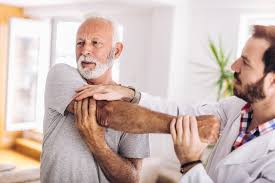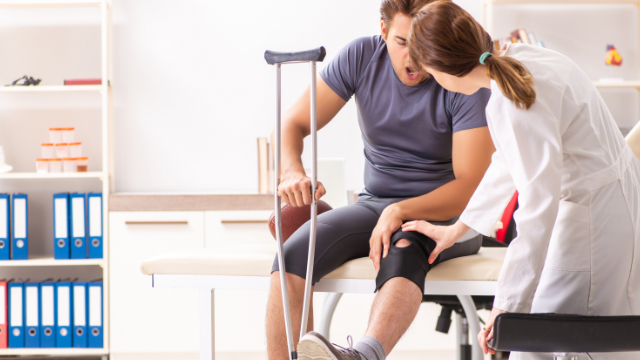Physical therapy plays a crucial role in the orthopedic rehabilitation process, aiding individuals recovering from injuries, surgeries, or chronic conditions affecting their musculoskeletal system. This specialized form of therapy focuses on restoring mobility, improving strength, and enhancing the overall quality of life for patients. In this article, we will explore the symptoms that indicate the need for orthopedic rehabilitation, precautions to take during the process, the best treatment approaches employed by physical therapists, and the success rates associated with physical therapy interventions.
Symptoms Indicating the Need for Orthopedic Rehabilitation

Orthopedic rehabilitation is often necessary when individuals experience specific symptoms related to musculoskeletal injuries or conditions. Recognizing these symptoms is vital for timely intervention and effective treatment. Here are some common signs that may warrant physical therapy:
- Pain: Persistent pain in joints, muscles, or bones can signal an underlying orthopedic issue. This pain may be acute (sudden onset) or chronic (lasting longer than three months), and it often worsens with activity or movement.
- Swelling and Inflammation: Swelling in the affected area, accompanied by redness or warmth, may indicate an injury or inflammation. This symptom is common in conditions such as tendonitis, bursitis, or after surgical procedures.
- Reduced Range of Motion: Difficulty moving a joint through its full range of motion is a key indicator that rehabilitation is necessary. Limited mobility can result from injuries, surgeries, or conditions like arthritis.
- Weakness: A noticeable decrease in strength, especially following an injury or surgery, can impede recovery and impact daily activities. This weakness may result from disuse, pain, or damage to the muscles or nerves.
- Instability or Difficulty Weight-Bearing: Experiencing instability in a joint or difficulty putting weight on a limb can indicate a need for rehabilitation. This is often seen in ankle sprains, knee injuries, and hip replacements.
- Post-Surgical Recovery: After orthopedic surgeries such as joint replacement or ligament reconstruction, patients typically require rehabilitation to regain strength, mobility, and function.
Recognizing these symptoms early can lead to timely interventions, ultimately improving recovery outcomes. If any of these symptoms are present, consulting a healthcare professional for an evaluation and referral to physical therapy is recommended.
Precautions to Take During Orthopedic Rehabilitation

While physical therapy can significantly enhance recovery, certain precautions should be observed to ensure patient safety and maximize treatment efficacy. Here are key precautions to keep in mind during orthopedic rehabilitation:
- Consult with a Qualified Healthcare Provider: Before starting physical therapy, patients should consult their physician or orthopedic specialist. A thorough assessment will help determine the appropriateness of physical therapy and identify any underlying conditions that require attention.
- Follow Individualized Treatment Plans: Each patient’s rehabilitation program should be tailored to their specific needs and conditions. Adhering to the prescribed exercises and treatments will help ensure optimal recovery.
- Communicate with the Physical Therapist: Open communication with the physical therapist is essential. Patients should inform their therapist of any pain, discomfort, or changes in symptoms during sessions to adjust the treatment plan as necessary.
- Avoid Overexertion: While it’s essential to challenge oneself during rehabilitation, patients should avoid pushing through severe pain or discomfort. Gradual progression is key to preventing further injury.
- Incorporate Rest and Recovery: Adequate rest between therapy sessions is vital. Allowing time for the body to recover helps prevent fatigue and reduces the risk of setbacks.
- Be Mindful of Pain Levels: Patients should distinguish between normal discomfort from exercise and pain indicating potential injury. Pain that is sharp, severe, or persists after a session should be reported to the therapist immediately.
By observing these precautions, patients can enhance their safety and improve the effectiveness of their rehabilitation process.
Best Treatments in Orthopedic Rehabilitation
Physical therapists employ a variety of treatments to address orthopedic conditions effectively. The following are some of the best treatment approaches utilized in orthopedic rehabilitation:
- Therapeutic Exercises: Customized exercise programs form the cornerstone of physical therapy. These exercises aim to strengthen muscles, improve flexibility, and enhance overall function. Physical therapists design exercises based on individual assessment, targeting specific areas of weakness or limitation.
- Manual Therapy: This hands-on approach involves techniques such as joint mobilization and soft tissue manipulation. Manual therapy aims to alleviate pain, improve circulation, and enhance mobility by addressing restrictions in muscles and joints.
- Modalities: Physical therapists often use modalities to complement therapeutic exercises. These may include heat or cold therapy, ultrasound, electrical stimulation, or laser therapy. Modalities can help reduce pain and inflammation, facilitating a more comfortable rehabilitation experience.
- Balance and Coordination Training: For patients with instability or balance issues, physical therapists incorporate specialized training to improve proprioception and coordination. This is especially important for individuals recovering from lower extremity injuries.
- Functional Training: Reintegrating patients into their daily activities is a primary goal of rehabilitation. Functional training focuses on simulating real-life tasks and movements to prepare patients for their return to work, sports, or other activities.
- Education: Educating patients about their condition and rehabilitation process is vital for success. Physical therapists provide guidance on proper body mechanics, injury prevention strategies, and home exercise programs.
By utilizing these treatment approaches, physical therapists can facilitate recovery and empower patients to regain their strength and mobility.
Post-Relief: Long-Term Strategies

Once patients experience relief from their symptoms through physical therapy, it is crucial to adopt long-term strategies to maintain progress and prevent future injuries. Here are some effective post-relief strategies:
- Continued Exercise: Patients should maintain an active lifestyle by incorporating regular exercise into their routine. Engaging in low-impact activities such as swimming, cycling, or walking can help preserve joint health and overall fitness.
- Adhering to Home Exercise Programs: Physical therapists often provide patients with home exercise programs to reinforce gains made during therapy. Consistent practice of prescribed exercises will help maintain strength and flexibility.
- Routine Check-ups: Scheduling periodic follow-up appointments with a healthcare provider can help monitor progress and address any new concerns. These check-ups are essential for ongoing health maintenance.
- Nutrition and Hydration: A balanced diet rich in vitamins and minerals, particularly calcium and vitamin D, is essential for bone health. Staying hydrated supports overall physical performance and recovery.
- Mindfulness and Stress Management: Practicing stress management techniques such as yoga, meditation, or deep-breathing exercises can enhance mental well-being, promoting overall recovery and reducing the risk of injuries.
By integrating these strategies into their daily lives, patients can optimize their rehabilitation outcomes and improve their quality of life.
Success Rates of Physical Therapy in Orthopedic Rehabilitation

The success rates of physical therapy in orthopedic rehabilitation vary depending on the specific condition being treated and the individual patient. However, numerous studies indicate that physical therapy significantly enhances recovery outcomes for a wide range of orthopedic injuries and conditions.
- Joint Replacement Surgery: Patients undergoing total knee or hip replacement often experience improved function and reduced pain through physical therapy. Studies suggest that about 80-90% of patients report satisfaction with their recovery after participating in a structured rehabilitation program.
- Sports Injuries: For athletes recovering from sports-related injuries, physical therapy is associated with high success rates in returning to play. Research shows that athletes who undergo physical therapy post-injury have a 70-90% chance of returning to their pre-injury performance levels.
- Chronic Pain Management: Physical therapy has been effective in managing chronic pain conditions, such as arthritis. Reports indicate that 60-70% of patients experience significant pain relief and improved function following a tailored physical therapy program.
- Post-Surgical Recovery: Patients who engage in physical therapy after orthopedic surgery tend to recover faster and more effectively than those who do not. Studies demonstrate that physical therapy can reduce recovery time by 30-50% for various orthopedic procedures.
In conclusion, physical therapy is a vital component of orthopedic rehabilitation, helping patients recover from injuries, improve their physical function, and enhance their overall quality of life. By understanding the symptoms indicating the need for rehabilitation, observing essential precautions, utilizing effective treatment strategies, and maintaining long-term health practices, patients can achieve significant success in their recovery journey.


